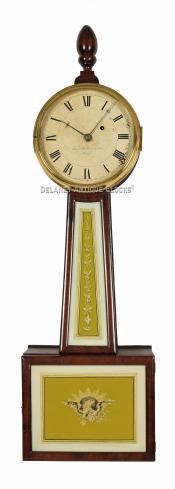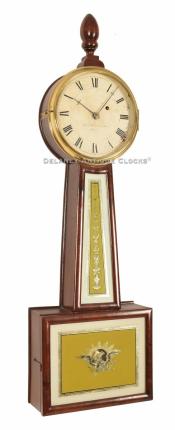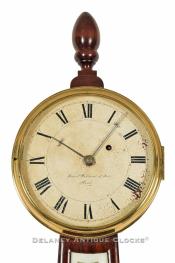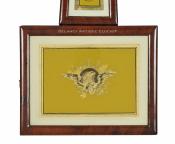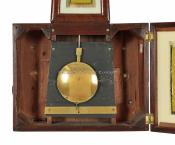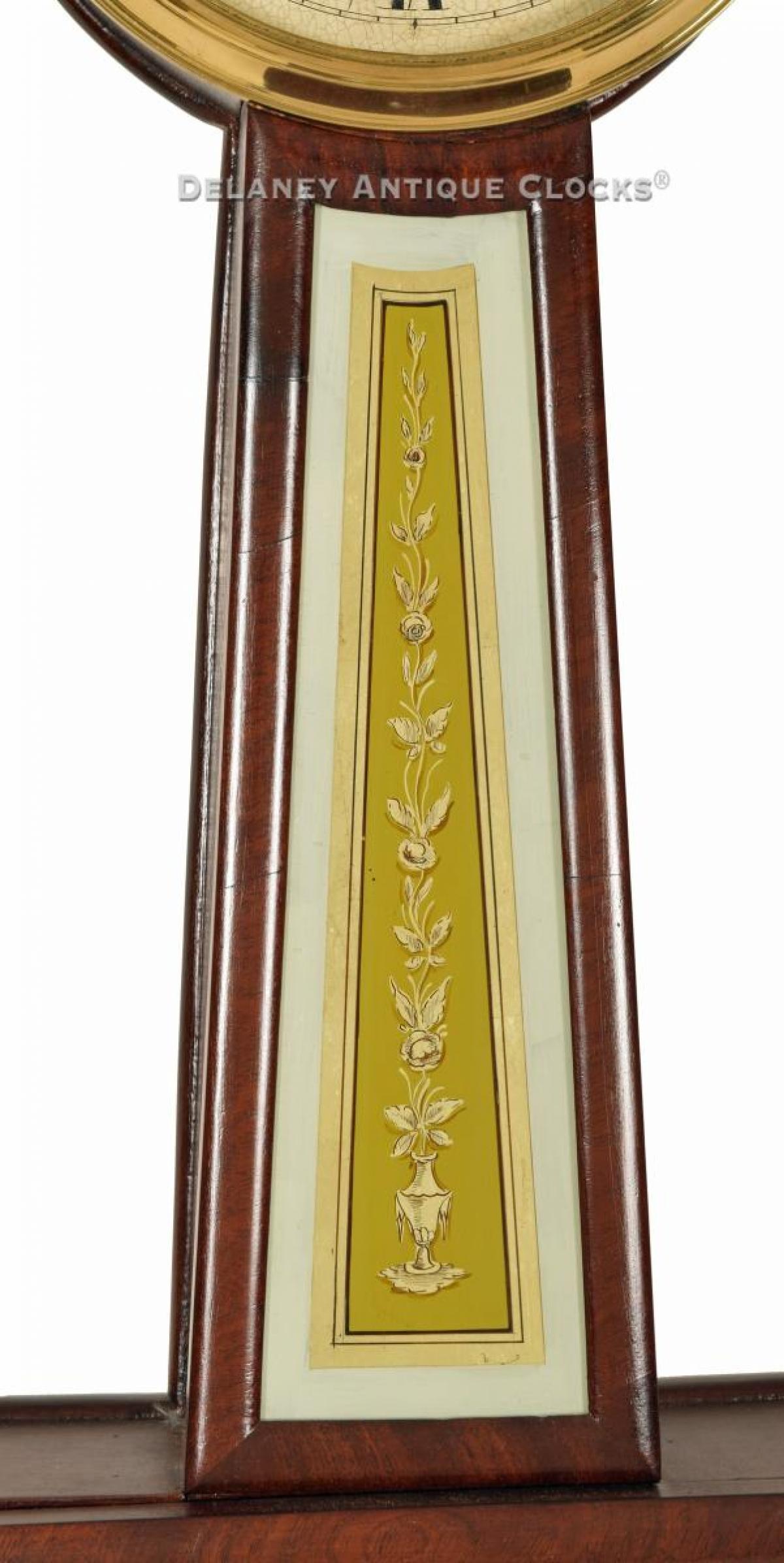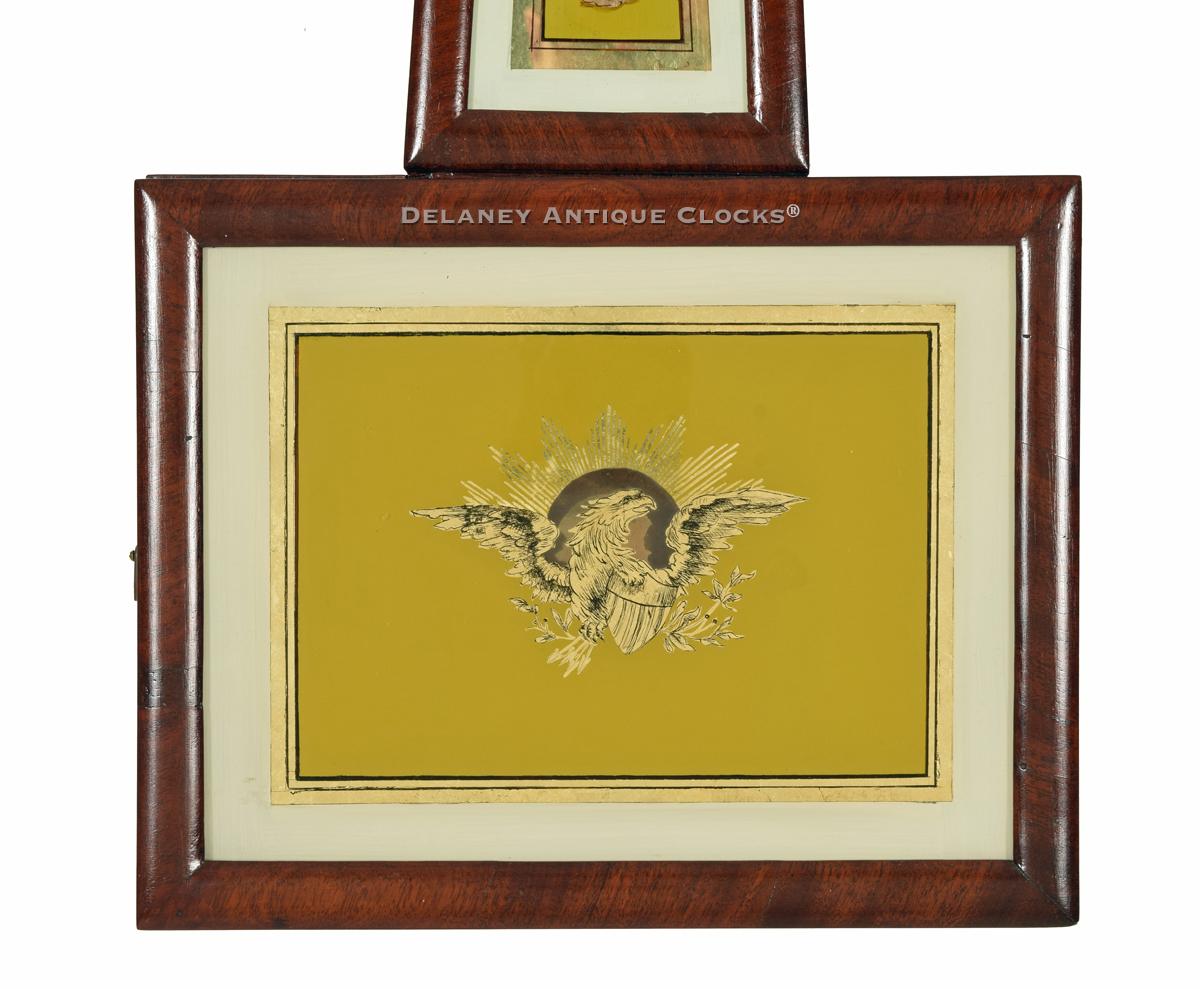This Federal Massachusetts wall Timepiece or "Banjo clock" was made by the partnership of Simon Willard & Son in Boston, Mass circa 1825. This example is signed and numbered on the dial, "No. 4611." 221215.
This timepiece case is constructed in mahogany and features a modern finish. The turned mahogany acorn-style finial is mounted on a finial plinth located at the top of the case. The half-round mahogany frames are fitted with fully restored reverse-painted glass panels. These are painted as a set and depict traditional themes. The sides of this case were never fitted with brass sidearms. The dial bezel is brass and is fitted with glass. This bezel is hinged and opens to the painted iron dial. The dial is formatted with a closed minute ring. Roman-style hour numerals are used to indicate the hours. This dial is signed and numbered. It reads "Simon Willard & Son / No. 4611." The signature is in excellent original condition. The two finely crafted steel hands display the time. These arrow-shaped pointers are hand-filed and of excellent quality. Behind the dial is the clockworks. It is constructed in brass and is of excellent quality. The long rectangular-shaped plates support the hardened steel arbors and brass gearing. It is a time only designed with a recoil escapement. It is weight-driven and designed to run for eight days. The movement is secured to the backboard with its original through bolts. The pendulum hangs from a bridge on the front plate of the works. The metal rod supports a brass-faced bob.
This decorative wall clock is approximately 33 inches long overall and was made between 1823 and 1826.
221225
On January 13, 1795, Simon Jr. was born in Roxbury, Massachusetts. He served his first clock apprenticeship to his father, Simon. Sometime during 1810-1812, he went to Portsmouth, New Hampshire, to train in the art of watchmaking under the stewardship of John Pond. In 1813, Simon Jr entered West Point Military Academy and graduated two years later in March. He was commissioned in the Ordnance Corps and sent to the Pittsburgh Arsenal on the Allegheny River in Pennsylvania. In May of 1816, he resigned at the rank of Lieutenant and returned to Roxbury in 1817. At that time, he started a glassware and Crockery business. On December 6, 1821, he Married Eliza Adams. Together they had seven children. As early as 1823, Simon Jr. was in business with his father as Simon Willard & Son. In 1826-27, Junior moved and lived in New York City to train as a chronometer maker under the stewardship of Dominick Eggert. When he returned from his apprenticeship in chronometer making, he set up his own shop on No. 9 Congress Street in Boston. Here he became very successful as a merchant and a chronometer repairman. He became well-known among sea captains and sailors as a weather prophet. Simon Jr. was a talented person and financially successful.

